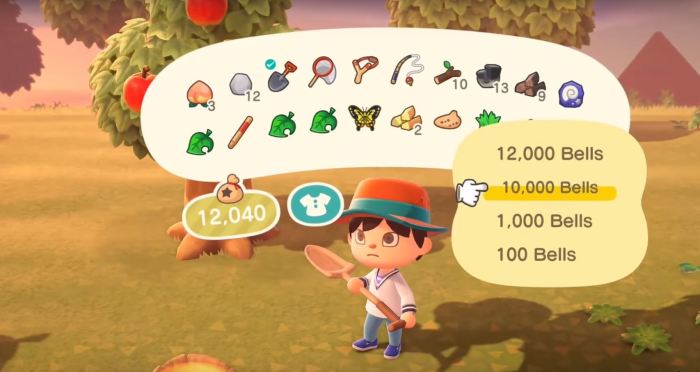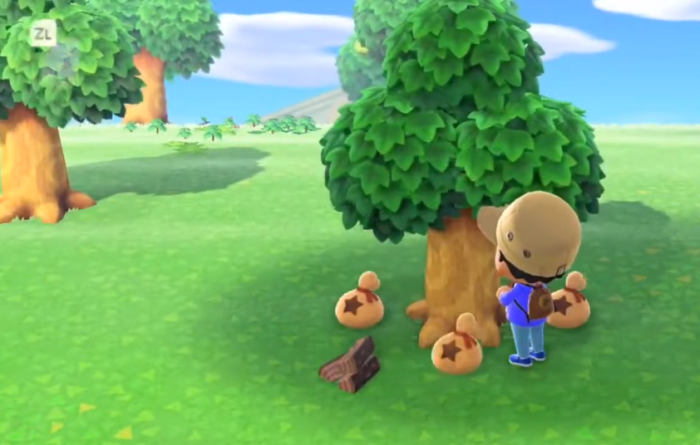Strategies for Maximizing Money Tree Profits

Plant money trees animal crossing – Cultivating money trees in Animal Crossing represents a compelling microeconomic simulation within the game’s larger context. The potential for significant bell returns is undeniable, yet achieving optimal yields necessitates a nuanced understanding of risk and reward. This analysis explores various strategies for maximizing profits from money trees, comparing their efficacy and outlining the inherent trade-offs.
Money Tree Return Rates and Risk Assessment
The core mechanic revolves around burying bells, which then sprout into a money tree yielding a harvest. However, the return on investment isn’t linear. Burying a small amount (e.g., 1000 bells) consistently yields a triple return (3000 bells). Burying larger sums introduces an element of risk. While there’s a chance of a significantly larger return (potentially three times the buried amount), there’s also a chance of only receiving the initial investment back, representing a substantial loss of potential profit.
For instance, burying 10,000 bells might yield 30,000 bells, but it also carries the risk of only producing 10,000 bells. This inherent uncertainty makes risk management a crucial aspect of money tree cultivation. The higher the risk, the higher the potential reward, but also the greater the potential for losses.
Comparative Analysis of Money Tree Strategies
Three distinct approaches to money tree management can be identified, each with its own advantages and disadvantages. These strategies represent different points along the risk-reward spectrum.
| Strategy Name | Pros | Cons |
|---|---|---|
| Conservative Strategy (1000 bells per tree) | Guaranteed triple return; minimal risk; consistent, albeit smaller, profits. Ideal for steady accumulation of bells. | Lower overall profit potential compared to riskier strategies. Requires planting more trees to achieve significant gains. |
| Moderate Strategy (10,000 bells per tree) | Higher potential profit than the conservative approach; balances risk and reward. A suitable middle ground for players aiming for faster accumulation. | Possibility of only receiving the initial investment back, reducing overall profit. Requires careful consideration of risk tolerance. |
| Aggressive Strategy (Larger sums, e.g., 99,000 bells per tree) | Highest potential profit; allows for rapid accumulation of large sums of bells. | High risk of only receiving the initial investment; significant potential for losses; requires substantial initial capital. Not recommended for players with limited resources. |
Efficient Management of Money Tree Growth Cycles
Effective management of money tree growth cycles is vital for maximizing profitability. One approach is to maintain a consistent planting schedule, ensuring a regular influx of bells. This requires diligent tracking of tree maturity and a planned approach to replanting. A second strategy involves prioritizing the planting of higher-yield trees, focusing resources on those with a higher probability of a triple return, especially in the early game.
So you’re trying to grow those sweet money trees in Animal Crossing? It’s all about burying bells, right? But before you get too excited, you might wonder about the real-world plant. To understand how they might grow, check out this link: is a money tree a tropical plant because that might influence how you approach your in-game gardening.
Knowing if it’s a tropical plant could help you figure out the best spot for your virtual money-making operation in your Animal Crossing island.
This approach involves a degree of calculated risk, but prioritizes efficiency. Finally, a third approach involves diversifying investment. This involves a combination of low-risk and high-risk plantings, mitigating the impact of losses from high-risk ventures with the consistent returns from low-risk investments. This balanced strategy minimizes the overall risk while still allowing for significant profit potential.
Visual Representation of Money Tree Growth

The visual progression of a money tree in Animal Crossing reflects its growth stages, mirroring the player’s investment and anticipation of reward. The subtle yet noticeable changes in its appearance offer a satisfying visual narrative alongside the game’s core mechanics of resource management and island development.The initial stage, immediately after planting a bag of bells, presents a small, unassuming sapling.
Its slender trunk barely emerges from the ground, supporting a sparse crown of small, light green leaves. This nascent form visually communicates the potential held within, a promise of future abundance. As the days pass, the sapling visibly grows taller and fuller. The leaves deepen in shade of green, gaining a richer, more vibrant hue. The trunk thickens, suggesting increased strength and stability.
This gradual transformation provides a visual parallel to the player’s growing investment and the anticipation of the harvest.
Mature Money Tree Appearance, Plant money trees animal crossing
A mature money tree, ready for harvesting, stands as a proud testament to the player’s efforts. Its height is noticeably greater than that of other trees on the island, often reaching a height comparable to, or slightly exceeding, the player character. The trunk is sturdy and robust, a rich brown color that contrasts with the lush, deep green foliage.
The leaves themselves are larger and fuller than those of the sapling, creating a dense, rounded canopy. The overall impression is one of healthy growth and prosperity, a visual representation of the financial reward awaiting the player.
Visual Differences Based on Bell Amount
While the basic growth pattern remains consistent regardless of the initial bell investment, a subtle difference exists in the mature tree’s appearance. Trees grown from larger initial investments (e.g., 10,000 bells versus 1,000 bells) may appear slightly larger and fuller, although this difference is not always dramatic. The difference is primarily in the overall fullness of the canopy, with trees grown from larger investments presenting a slightly denser and more voluminous crown.
However, this visual variation is subtle and not always immediately apparent.
Visual Impact of a Money Tree Grove
A grove of mature money trees, strategically placed on the island, creates a striking visual effect. The concentrated display of their rich green canopies and sturdy brown trunks transforms a section of the island into a vibrant symbol of wealth and success. The visual impact is amplified by the contrast between the money trees and the surrounding environment – the bright green against the muted tones of the natural landscape creates a captivating visual focal point, showcasing the player’s financial prosperity and meticulous island design.
A well-placed grove can elevate the aesthetic appeal of the island, transforming a simple space into a visually engaging and rewarding area.
Question Bank: Plant Money Trees Animal Crossing
What happens if I bury a different amount of bells than 1,000?
Burying less than 1,000 bells will always yield a single bag of 3,000 bells. Burying more than 1,000 bells has a chance of yielding three bags of the amount you buried, but it’s not guaranteed. The risk increases with higher amounts, offering a higher potential reward.
How long does it take for a money tree to grow?
It takes three days for a money tree to fully mature and be ready for harvesting.
Can I plant money trees anywhere on my island?
While you can plant them almost anywhere, consider placement near your home or other areas you frequently visit for easy access. Also, consider the aesthetic impact on your island’s overall design.
What if I accidentally chop down a money tree before it’s mature?
You’ll lose the potential bells. Be careful when using your axe near your money trees!
